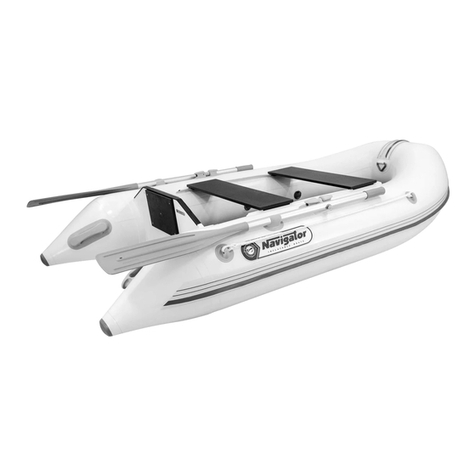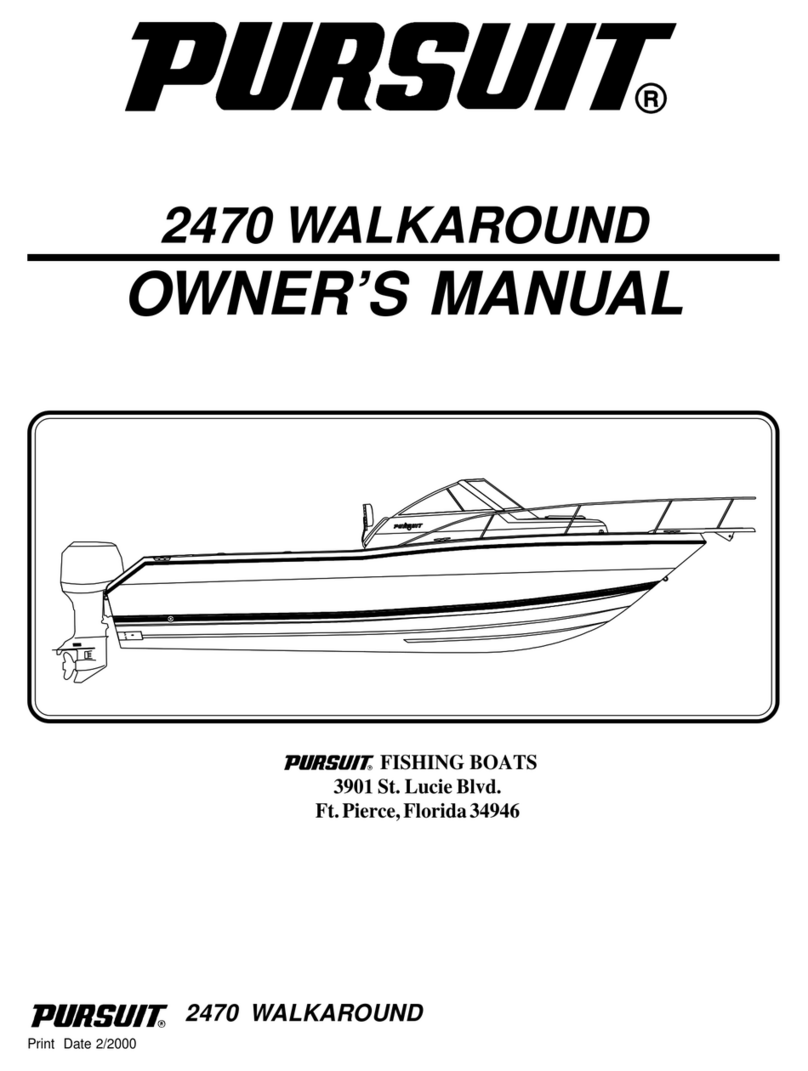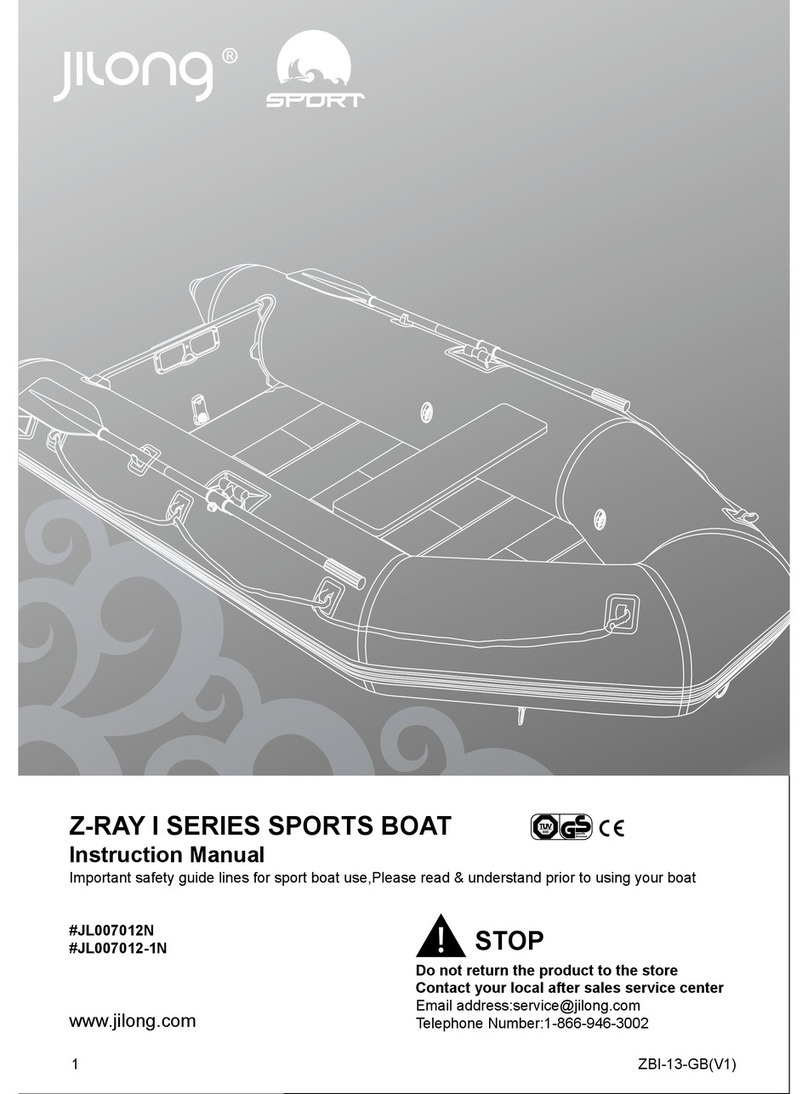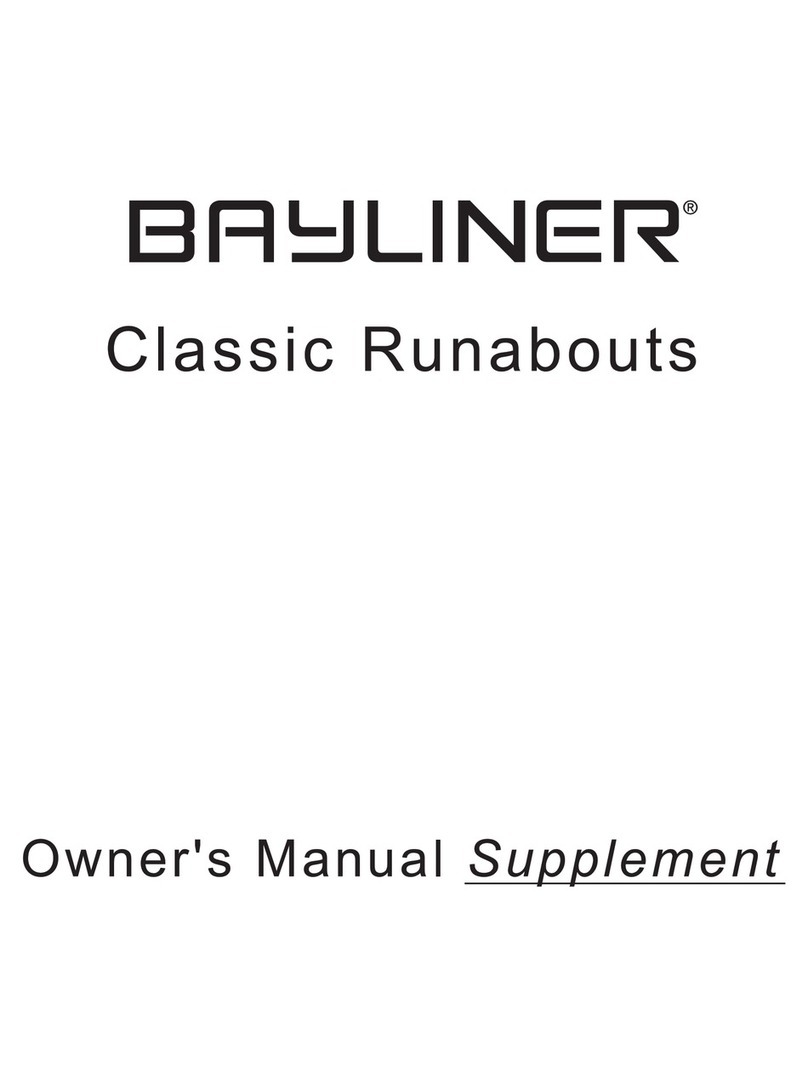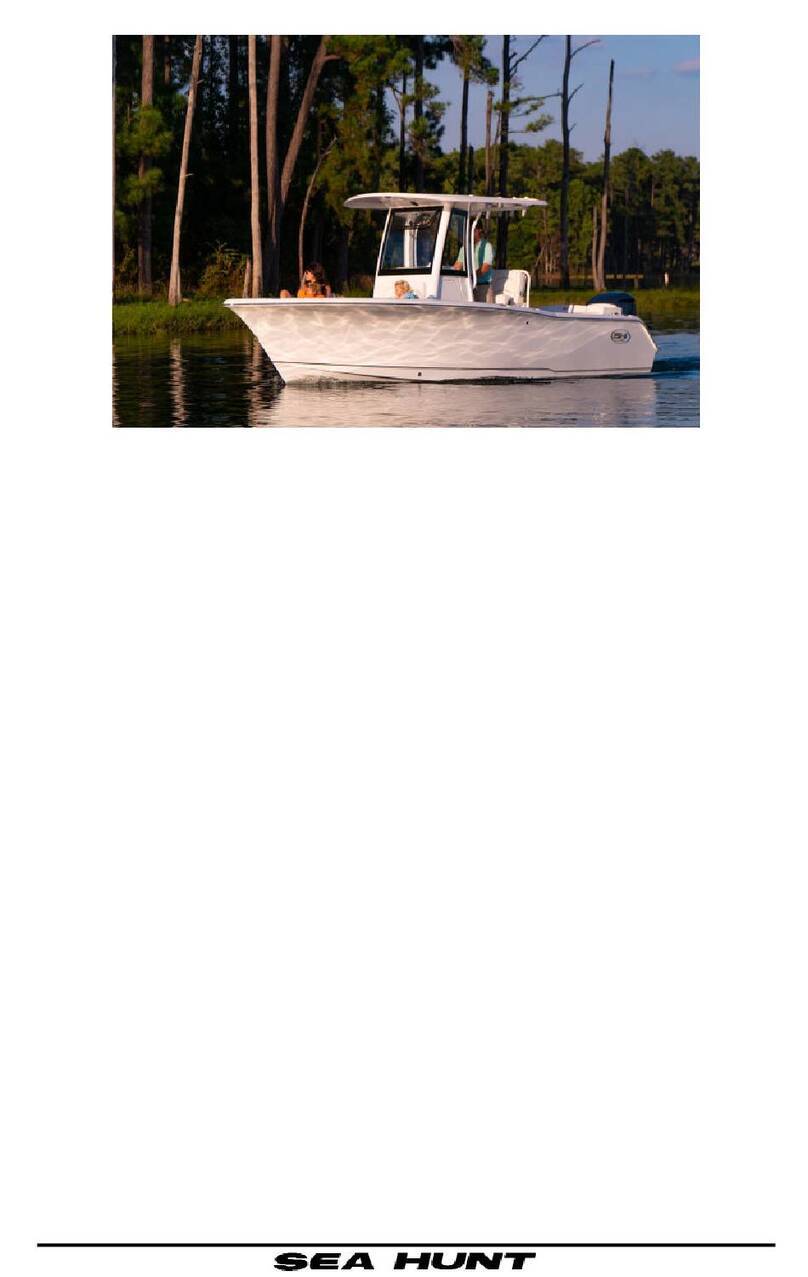FLASSMER RR 4.2 Service manual

Operator’s Handbook for
Fassmer Rescueboat
Type RR 4.2
40.0420-019.01.01.0
Fr. Fassmer GmbH & Co. KG
Industriestr. 2
D - 27804 Berne / Germany
Phone: +49 (0)4406 942-0 Fax: +49 (0)4406 942-100
Internet: www.fassmer.de
Art. no. 135897
GB

Operator’s Handbook for
Fassmer rescue boats Type RR 4.2
Document 40.0420-019.01.01.0 Art. No. 135897 Mod. 0 Lange/WZ 03.11.2006
2
Contents Page
1. Introduction .............................................................................................. 4
2. Brief construction description ................................................................... 5
3. Operation of Boat...................................................................................... 7
3.1 Lowering of the rescue boat ................................................................ 7
3.2 Other operating situations .................................................................. 16
3.2.1 Lowering from a vessel moving ahead .........................................16
3.2.2 Lowering into seaway ...................................................................16
3.2.3 Towing ..........................................................................................16
3.2.4 Righting of capsized boat .............................................................17
3.2.5 Rescue of floating persons ...........................................................17
4. Recovery ..................................................................................................18
5. Operation of Equipment ...........................................................................21
5.1 Engine plant ........................................................................................21
5.1.1 Outboard engine ............................................................................21
5.1.2 Discription of the engine plant ......................................................23
5.2 Electric plant .......................................................................................24
5.3 Rudder plant .......................................................................................25
5.4 Bailing .................................................................................................25
5.5 Lights ..................................................................................................26
5.6 Fuel .....................................................................................................26
5.7 Rowing ................................................................................................26
6. Outfit and loose equipment ......................................................................27

Operator’s Handbook for
Fassmer rescue boats Type RR 4.2
Document 40.0420-019.01.01.0 Art. No. 135897 Mod. 0 Lange/WZ 03.11.2006
3
7. Boat support .............................................................................................28
8. Hoisting equipment ..................................................................................29
9. Periodic servicing and inspection by crew ...............................................30
9.1 WEEKLY and after every recovery of the boat into the davit .............31
9.2 MONTHLY ..........................................................................................32
9.3 3-MONTHLY .......................................................................................33
10. Servicing, inspection, overhaul and testing by Fassmer-certified
service engineer .......................................................................................35
10.1 ANNUAL THOROUGH EXAMINATION ...........................................35
10.2 EVERY 2 YEARS ..............................................................................38
10.3 EVERY 5 YEARS ..............................................................................39
10.4 EVERY 10 YEARS ............................................................................41
11. Maintenance ..........................................................................................43
11.1 GRP-maintenance and repair ...........................................................43
11.2 Engine plant maintenance ................................................................46
11.3 Electric plant maintenance ................................................................47
12. First installation ......................................................................................48
12.1 Suspension Eyes ..............................................................................49

Operator’s Handbook for
Fassmer rescue boats Type RR 4.2
Document 40.0420-019.01.01.0 Art. No. 135897 Mod. 0 Lange/WZ 03.11.2006
4
1. Introduction
A rescue boat is carried for the protection of every person on board. It can,
however, only fulfil its task, if everyone on board is acquainted with the
whole rescue boat, its functions and operation.
Only ongoing practice brings reliability to the rescue boat and prevents
handling errors in a case of danger.
Equally important is the sound technical condition of the boat, which is
obtained though regular maintenance.
This instruction manual cannot, of course, be complete, nor can it
unequivocally cover all procedures or situations of danger that could arise
during the operation the boats.
Each user of the boat should familiarise himself with the boat before use and
before a situation of danger could arise.
This manual should help you accomplish this.
In the case of further questions, please forward your request to:
Fr. Fassmer GmbH & Co. KG
Industriestr. 2
D - 27804 Berne / Germany
Phone: +49 (0)4406 942-0
Fax: +49 (0)4406 942-100
Email: [email protected]
www.fassmer.de
Quote your order number and build year, stamped on the Fassmer-rescue
boat plate and found behind the steering tower, or shipyard and build year of
the mother ship.
Remark
Additional detail manuals concerning engine, release system,
spare part lists, drawings, certificates etc. can be found in the
“Rescue boat Documentation” delivered with each boat, and
found on the mother ship.
Note
This manual was established with consideration of:
- SOLAS 74, Chapter III, Edition 2004
- Resolution MSC.152(78)
- IMO MSC CIRC. 1206-MEASURES TO PREVENT ^
ACCIDENTS WITH RESCUE BOATS-(Consolidated Circ.
from 1093 etc)
- MSC1-Circ. 1205-Guideline for Rescue boat System
manuals.
- GL-“Checklist for maintenance and inspection of safety
equipment” (2005)
-Lloyd’s Register “GUIDANCE NOTES FOR THE
PREPERATION OF A RESCUE BOAT´S OPERATION
INSTRUCTION & MAINTENANCE MANUALS”.

Operator’s Handbook for
Fassmer rescue boats Type RR 4.2
Document 40.0420-019.01.01.0 Art. No. 135897 Mod. 0 Lange/WZ 03.11.2006
5
2. Brief construction description:
The boat is built as v-shaped hull with transom stern. The raised foredeck
clears the sea well and gives large reserve buoyancy to the bow.
The v-shaped hull together with the sharp foreship and wide waterline
combines good behaviour in heavy sea also at high speeds with excellent
stability characteristics.
The complete hull of the boat is produced using a self-extinguishing polyester
resin, glass rowing tissues and chopped strand mats.
All scantlings meet the requirements of “Germanischer Lloyd” or respective
certifying authority.
The boat has a complete inner skin built of glass-fibre reinforced polyester
(GRP). The inner skin is led up to the gunwale, where it is glued and screwed
together in a flange like fashion. The gap between inner and outer shells is
filled with CFC-R11 free polyurethane foam keeping the boat buoyant even
when damaged.
The aft seat bench is used as stowage room for fuel, inventory, provisions etc.
The boats interior / cockpit is self-bailing.
Boats with engine tiller operation:
Typical for outboard engines from 15 HP to 30 HP with manual starting facility.
These boats are equipped with a hand start outboard engine and tiller steering.
They are sufficient for towing 25 person liferafts.
Speed with 2 persons app. 13 to 18 knots and with 6 persons more than 6
knots. A one point wire suspension is fitted as hoisting arrangement, requiring
a release hook at the davit. No Fassmer release hook belongs to the boats
equipment.
Boats with remote controlled engine operation:
Typical for outboard engines from 40 HP to 60 HP with electric starting facility.
These boats are equipped with an electric starting outboard engine and remote
steering from a console in front of the helmsman.
These boats are sufficient for towing a 50 person liferaft.
Speed with 2 persons app. 20 to 25 knots and with 6 persons 18 to 21 knots.
A one point wire suspension is fitted as hoisting arrangement, requiring a
release hook at the davit. No Fassmer release hook belongs to the boats
equipment.
Boats with inboard diesel engine:
An inboard diesel engine with shafting and propeller is installed; steering is
done by a manual tiller.
The diesel engine has an electric starter with twin battery.
These boats are sufficient for towing a 50 person liferaft .
Speed with 2 persons app. 8 knots and with 6 persons more than 6 knots.
A one point wire suspension is fitted as hoisting arrangement, requiring a
release hook at the davit. No Fassmer release hook belongs to the boats
equipment.
Optional equipment:
A fixed installed Fassmer Duplex release hook with hydrostatic interlock
instead of the wire suspension.
For overall drawings refer to next page

Operator’s Handbook for
Fassmer rescue boats Type RR 4.2
Document 40.0420-019.01.01.0 Art. No. 135897 Mod. 0 Lange/WZ 03.11.2006
6
Overall drawing: (RR 4.2)
Fig. 1
Overall drawing: (RR 4.2)
Fig. 2

Operator’s Handbook for
Fassmer rescue boats Type RR 4.2
Document 40.0420-019.01.01.0 Art. No. 135897 Mod. 0 Lange/WZ 03.11.2006
7
3. Operation of Boat
Safety Note:
For drills follow the recommendations of IMO-MSC1.Circ
1206-MEASURES TO PREVENT ACCIDENTS WITH
RESCUE BOATS, for example:
!Elements of the drill that may involve unnecessary risks
need special attention or may be excluded from the drill.
!The lowering of a boat with its full complement of persons
is an example of an element of a drill that may, depending
on the circumstances, involve an unnecessary risk. Such
drills should only be carried out if special precautions are
observed.
!Before placing persons onboard a rescue boat, it is
recommended that the boat first be lowered and recovered
without persons onboard to ascertain that the arrangement
functions correctly. The boat should then be lowered into
the water with only the number of persons onboard
necessary to operate the boat.
!To prevent lashings or gripes from getting entangled,
proper release should be checked before swinging out the
davit.
3.1 Lowering of the rescue boat
The following description contains the general procedure for MOB operation.
Circumstances may be unique onboard different vessels or the concerning
situation may require different action. The description is formed as a checklist,
which shall be used when required. (Items marked *S should be simulated
when carrying out drills)
1. When the signal for MOB operation is given all crew members
determined for rescue operation, fitted with clothing covering the whole
body, solid shoes and carrying life jackets and survival suits or similar if
applicable go to the MOB station.
The designated persons should bring a SART (Search and Rescue Radar
Transponder, *S), portable VHF radio (having verified its operation) and
additional fuel, water, clothing, blankets plus any other additional
equipment (*S) to the MOB area.
The assigned crew members will then prepare the boat for launching:
Charging plug
2. Disconnect the charging cable, if fitted.
(see overall drawing Fig.1)

Operator’s Handbook for
Fassmer rescue boats Type RR 4.2
Document 40.0420-019.01.01.0 Art. No. 135897 Mod. 0 Lange/WZ 03.11.2006
8
3. Ensuring release hook closure.
In most cases the release hook is part of the davit and has to be operated
according it’s own instructions. In such case refer to instruction of release
hook. (Such hooks are not a Fassmer hooks).
Only in the case a Fassmer release hook is installed:
!Check arrow “A” to be at the notch on the side plate.
!Check the position of the release bolt (1). The mark must be in line with
the green “OK” arrow.
!Check release handle (2) is secured with the safety pin (3).
!Check shackle bolt (4) is closed.
Fig. 3a
Fig. 3b
Caution:
Do not open the boat lashings or lower the rescue boat before
checking the correct position of the release hooks, release bolts
and the release handle!
4. Switch the battery change-over control (1) to battery 1 or 2, if fitted.
(only for rescue boats with a electric starter)
Battery change-over switch
2
1BatteryBattery
21
1+2
OFF
WARNING: Use only Battery 1 or 2. Both together only in
emergency. Don´t switch off when e ngine is running.
Danger of generator damage!
Fig. 4
Remark
Rescue boats with an outboard engine from 15 HP to 30 HP
have no electric system. Therefore these boats are not equipped
with a battery change-over control.
1
1 2
3
A
4

Operator’s Handbook for
Fassmer rescue boats Type RR 4.2
Document 40.0420-019.01.01.0 Art. No. 135897 Mod. 0 Lange/WZ 03.11.2006
9
5. The outboard engine should be regularly maintained and be ready for
starting, i.e.:
!Ensure that fuel tank is full.
!Ensure fuel tank is connected to engine.
!Ensure that fuel valve is open, if fitted
!Open ventilation screw on fuel tank (only portable tanks).
!Batteries fully charged, if fitted.
!Emergency stop rope attached.
!Outboard engine hinged down
If possible, examine before lowering!
6. The following actions are carried out by the crew on ship’s deck:
!Check that the painter is tied off and secured
!Check that no maintenance “hanging off” pendants are attached
to the boat
!Ensure all additional equipment is given to the crewmen in the boat
!Ensure that fender skates are fitted on correct side and secured with
rope down under the boat.
!Prepare the davits, lashings etc. for lowering according to davit
instructions
!Check the launching area is cleared from obstructions. When clear,
contact the bridge and report “ready for boarding”.
!The bridge will give the order to board and launch the boat. The boat is
then released from its lashings, which are to be cleared away.
7. Board rescue boat and distribute persons in boat, that the suspended
boat is hanging horizontal.
8. Open boat lashings and secure them.
9. Lower the boat into water according to davit instructions.
Important:
Keep painter always tight during lowering and hoisting to prevent
turning of boat and minimise impacts against the ship’s side,
otherwise the boat, engine or persons might be damaged or hurt!
Don’t lean overboard! Keep arms inside! Stay seated and
use suitable handholds

Operator’s Handbook for
Fassmer rescue boats Type RR 4.2
Document 40.0420-019.01.01.0 Art. No. 135897 Mod. 0 Lange/WZ 03.11.2006
10
10. Starting engine:
Manual started outboard engines (usually from 15 HP to 30 HP):
These boats are equipped with a hand started outboard engine with
tiller steering (Fig.5).
!Ensure fuel hose is connected to the outboard engine. The arrow of
the pump fuel ball must showing to the outboard engine.
!Loose ventilation screw at the fuel tank.
!Push pump fuel ball to get fuel into the carburettor.
!Ensure engine gear is in neutral position
!Pull out choke (only on cold conditions)
!Pull the starter rope
!Push in choke (if engine is starting)
Fig. 5
Note The engine doesn’t starts if the emergency rope is not fitted
correctly and the locking device is not rested.

Operator’s Handbook for
Fassmer rescue boats Type RR 4.2
Document 40.0420-019.01.01.0 Art. No. 135897 Mod. 0 Lange/WZ 03.11.2006
11
Electric started outboard engines (usually from 40 HP to 60 HP):
These boats are equipped with electric started outboard engines with
remote operation and steering from steering stand by bowden wires.
(Fig. 6)
!Ensure fuel hose is connected to the outboard engine. The arrow of
the pump fuel ball must showing to the outboard engine.
!Loose ventilation screw at the fuel tank.
!Push pump fuel ball to get fuel into the carburettor.
!Ensure engine gear is in neutral position.
!Turn Key to the “on” position. (1)
!Pull out choke (only on cold conditions). (2)
!Turn Key to the start position. (1)
!Push in choke (if engine is starting). (2)
Fig. 6
Electric started inboard diesel engine (Fig. 7) :
!Move the engine control lever to the neutral position. (1)
!Switch to run position. (2)
!Push the start button until engine runs (3)
Fig. 7
Note The engine doesn’t starts if the emergency rope is not fitted
correctly and the locking device is not rested.
1
2
2
1
3

Operator’s Handbook for
Fassmer rescue boats Type RR 4.2
Document 40.0420-019.01.01.0 Art. No. 135897 Mod. 0 Lange/WZ 03.11.2006
12
11. Release hooks:
In most cases the release hook is part of the davit and has to be
operated according it’s own instructions. In such case refer to
instruction of the release hook (which is not a Fassmer hook).
Only valid if boat is equipped with fixed release hook of
Fassmer Duplex type.
See instruction on the following pages
!
WARNING:
On-load release may result in death or serious injury due to
dropping the rescue boat in water from a height. The release
handle is to be handled by the coxswain only.
Refer to the hook instructions.
When using the emergency release it is possible to set the
hooks free under load when hanging in the davits or whilst
lowering. Use the release handle only when you are sure
that the boat is waterborne or as close as possible.

Operator’s Handbook for
Fassmer rescue boats Type RR 4.2
Document 40.0420-019.01.01.0 Art. No. 135897 Mod. 0 Lange/WZ 03.11.2006
13
Operation and releasing hook:
(Only valid if boat is equipped with fixed release hook of Fassmer Duplex type)
!
Caution – Potentially Fatal:
Operation by Coxswain only
Faulty operation will drop the boat! Operation of release
system should only be carried out by the coxswain. Do not
enter, lower or hoist the boat before the correct positioning of
the hook, release bolt and release handle are checked.
Normal release:
!Turn the safety pin (1) and pull it out.
!If the red safety indication (10) has turned to green the boat is water-
borne and hydrostatic interlock (3) has unlocked the release handle (2).
!Operate the release handle (2) swiftly. This unlocks the hooks, but they
will open only under load.
1
2
red green
3
10
Caution:
Never operate the release handle with excessive force.
Damage to the release system could occur.
Emergency release: (detailed photos on next pages)
!
Caution:
This operation drops the rescue boat and may kill you or
cause serious injury!
When using the emergency release it is possible to set the
hooks free under load when hanging in the davits or whilst
lowering. Use the release handle only when you are sure that
the boat is waterborne!(see note)
If the hydrostatic interlock (3) does not unlock the release handle (2) the
hooks can alternatively be unlocked for emergency use in the following way:
!Ensure that the boat is waterborne (see note).
!Remove safety glass (4) using the crowbar (11).
Note: The crowbar is a red stanchion attached with a chain close to the
release box (26).
!Open the shackle bolt (5).
!Operate the release handle (2) swiftly. This unlocks the hooks
simultaneously, and if they are under load they will drop the boat
suddenly!
3
2
5
red
4
Note:
If for any reason it is NOT possible to lower the boat into the
water, the helmsman might decide based on his expertise to
operate the release as close to the water as possible. This
should only be done as a last resort after checking all
equipment and finding a mechanical problem or issue on with
the ship. Take into account that already drops from low
heights (up to 1 m) might cause injuries or death. Drops
from more than 3 m will already seriously damage the
rescue boat!

Operator’s Handbook for
Fassmer rescue boats Type RR 4.2
Document 40.0420-019.01.01.0 Art. No. 135897 Mod. 0 Lange/WZ 03.11.2006
14
Details for emergency release:
Removal of the safety glass (4)
with crowbar (11)
Opening the shackle bolt (5)
Operate release handle (2)

Operator’s Handbook for
Fassmer rescue boats Type RR 4.2
Document 40.0420-019.01.01.0 Art. No. 135897 Mod. 0 Lange/WZ 03.11.2006
15
Painter release
12. Release Painter (Fig. 8):
!Pull the painter release wire (1) to release the painter fitting (2)
Fig. 8
Hold in red button when
setting speed control lever
to disengage propeller
Engine Control Lever
N(Neutral)
(Forward)
F(Reverse)
R
13. Sailing:
!Sail away
2
1

Operator’s Handbook for
Fassmer rescue boats Type RR 4.2
Document 40.0420-019.01.01.0 Art. No. 135897 Mod. 0 Lange/WZ 03.11.2006
16
3.2 Other operating situations:
3.2.1 Lowering from a vessel moving ahead:
All rescue boats are designed for lowering with the vessel making headway of
up to 5 knots or under the influence of a corresponding heavy current or wind.
In such cases the following is to be observed:
!Correct attachment and length of painter is very important in order to keep
the boat as upright as possible under davit.
!When the hook is released, and before painter is released run the engine
forward.
!If possible a member of the crew can use a boat hook to fend the bow
away from the ship.
3.2.2 Lowering into seaway:
It may be necessary to launch into rougher seas where the rise and fall of the
water level will cause severe motions and possibly damage the boat. Once
waterborne the boat will pitch and heave making immediate departure very
important. The following points can help in such a situation:
!Lower davit wire so far until it is slack in the wave through. This will prevent
the hook snatching and shock loading the boat and davit.
!As soon as the boat touches the water, put the engine slow ahead and the
rudder hard over to direct the bow towards the ship’s side, with the stern
out. When the hook is released the davit block will swing away from the
boat.
!If possible a crewman with boathook can assist with this process and the
helmsman can then power the engine full astern to get clear.
3.2.3 Towing:
Rescue boats are able to tow the largest liferaft of the ship with at least
2 knots. For boats with outboard engine:
!The towing line is attached at the two attachments points or clamps at
transom for equal distribution of towing force and straight run ahead.
!Hard chocks on towing line have to be avoided.
!If the boat itselfs get towed, use painter fitting to moor towing rope. The
max. towing speed for liferafts is 3 kts., for the boat max. 5 kts.
max. 3kts.
!
Danger:
During towing pay attention that towing rope is kept free from
propulsion unit to prevent blocking and damage of propulsion.

Operator’s Handbook for
Fassmer rescue boats Type RR 4.2
Document 40.0420-019.01.01.0 Art. No. 135897 Mod. 0 Lange/WZ 03.11.2006
17
3.2.4 Righting of capsized boat:
Without righting aid:
If the boat is capsized all persons swim to leeward side of the boat and stand
outside on the bottom of the boat. Pull the capsizing line tight and try to right up
the boat by moving their weights.
Danger:
Pay attention that persons in water will not hurt during uprighting
the boat. Persons staying inside the boat during capsizing have
to dive out below gunwale. If the person inside the boat is injured
or jammed, give assistance to get the person out of the boat, if
possible.
3.2.5 Rescue of floating persons:
!Attach rope ladder port or starboard side to clamp or lifelines.
!Pull helpless person with two persons amidship over the gunwale into
the boat (if possible horizontal, declutch the engine)
!An injured person can be placed on the floor. The person should be
supported by crew members. (Use thermal protective aid from loose
equipment if applicable).

Operator’s Handbook for
Fassmer rescue boats Type RR 4.2
Document 40.0420-019.01.01.0 Art. No. 135897 Mod. 0 Lange/WZ 03.11.2006
18
4. Recovery
Preparation for Recovery: Reset of Release Hooks:
(This is only valid if boat is equipped with fixed release hook of Fassmer Duplex type)
If another hook is in place (attached to the davit) those hook instructions have to be observed.
!
Warning:
Ensure that the hooks are closed before recovering the boat!
Incomplete resetting of the release hooks can cause the
rescue boat to drop and death to occupants!
In case of problems refer to our trouble shooting section (chapter 7 of the
hook manual) or call for service.
Caution:
Never operate release handle with excessive force!
The Handle is blocked by an internal safety device (21) if the
hook is not in the recovery position
Hook up to 6.6t:
!Check if hook (6) is closed: arrow “A” to be at the notch on the side plate.
!Return the release handle (2) to the closed position.
!Check the position of the release bolt (9). The mark must be in line with
the green “OK” arrow.
!Secure release handle (2) with the safety pin (1).
!The shackle bolt (5) must be closed
9
green
8
green
1
2
5
A
6
7
Warning:
If the hook position “A”, or the release bolts (9) are not
correctly aligned, or if the hooks or release handles (2) can not
easily be moved DO NOT USE THE HOOKS for hoisting
Attention:
Retrieval of rescueboats under seaway is extremely difficult.
Therefore, this is only recommended for action in harbours or
in very sheltered waters with the ship making no headway.
Max. 6 persons in this boat during hoisting.

Operator’s Handbook for
Fassmer rescue boats Type RR 4.2
Document 40.0420-019.01.01.0 Art. No. 135897 Mod. 0 Lange/WZ 03.11.2006
19
Recovery of the boat:
!Drive the boat under the davit.
!Take the painter and connect it to it’s fitting.
Caution:
Take care that loose end of the painter can not get into the
propulsion. It is recommend the end of the painter to fit with a
floater to find and pick up the painter easier.
For rescue boats without fixed installed Fassmer release hook:
!Catch the release hook of the davit and connect it to the suspension ring
of the boats hoisting wire.
For further details refer to the release hook manual / instructions.
For rescue boats with fixed installed Fassmer release hook:
!Catch the suspension link and push it into the fixed installed release
hook entangled.
Valid for both types:
!Give an order to the winch controller to raise the boat just clear of the
water.
!Check, once more, the secure condition of release system.
!If necessary correct weight distribution in boat for horizontal hanging.
!Hoist boat up to deck level
!Stop engine
Important:
Keep painter always tight during lowering and hoisting to
prevent turning of boat and minimise impacts against the
ship’s side, otherwise boat, engine or persons might be
damaged or hurt!
Don’t lean overboard! Keep arms inside! Stay seated and
use suitable handholds

Operator’s Handbook for
Fassmer rescue boats Type RR 4.2
Document 40.0420-019.01.01.0 Art. No. 135897 Mod. 0 Lange/WZ 03.11.2006
20
!Secure the boat
!Disembark the boat
!Return the boat to it’s stowed position and lash it according to the davit
instructions.
!Re-stow all loose equipment.
!Remove all items that are not part of the boat equipment (portable VHF,
SART etc.).
Charging plug
!Reconnect charging cable if fitted.
!Outboard engine to be flushed with fresh water and serviced according
to engine instruction.
Tip: DON’T stop engine by STOP SWITCH after running. Remove fuel
hose and wait until engine stops by itself. This removes remaining fuel
from the engine and facilitates a later re-start. Re-connect fuel hose
again after this.
!Refill fuel and other consumed items.
!Any problems or damage experienced during the test should be settled
immediately.
!Switch off battery switch when leaving the boat, if fitted.
Table of contents



